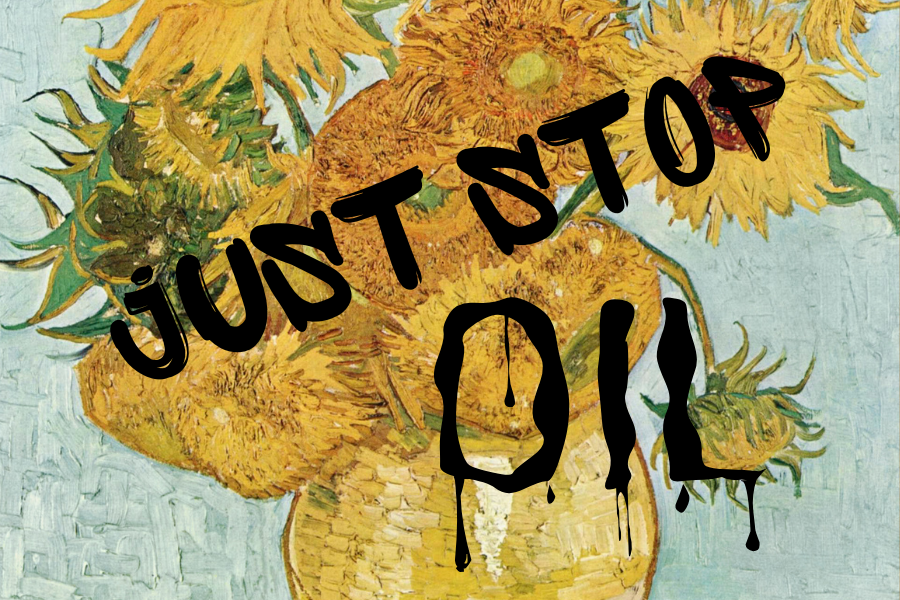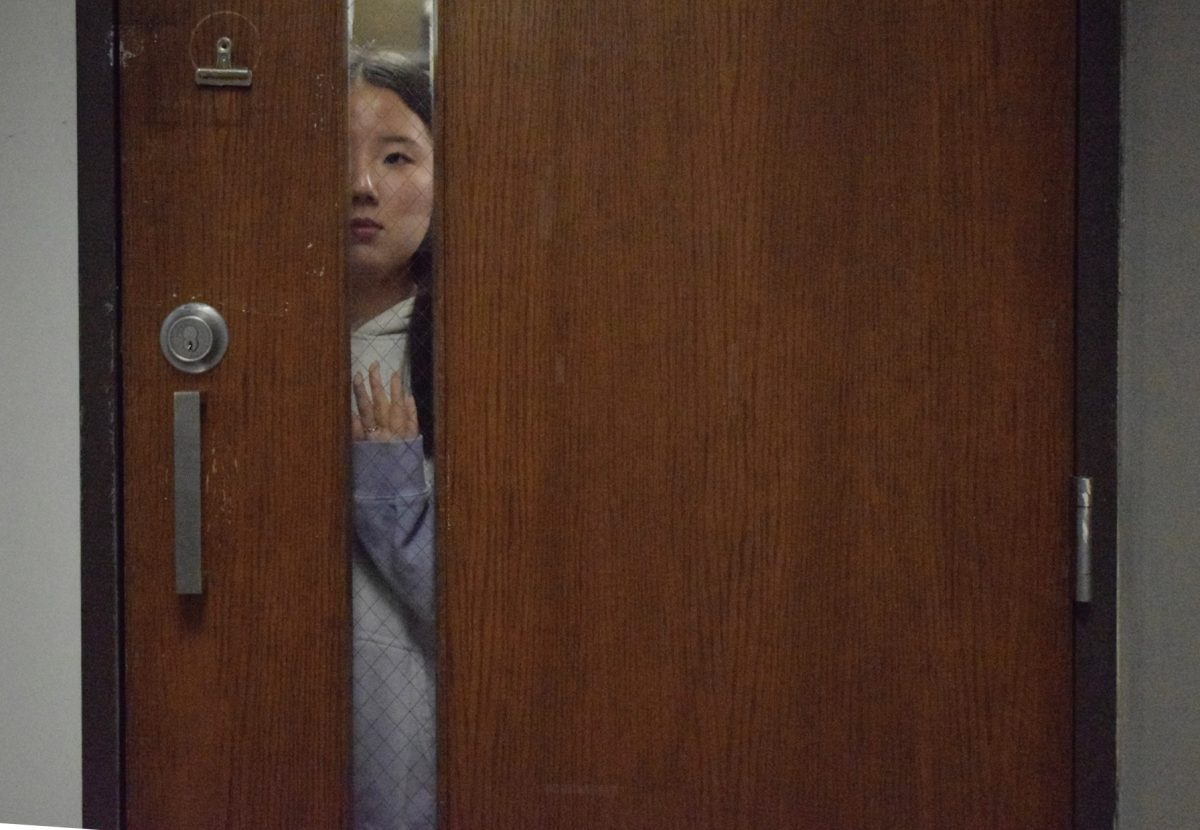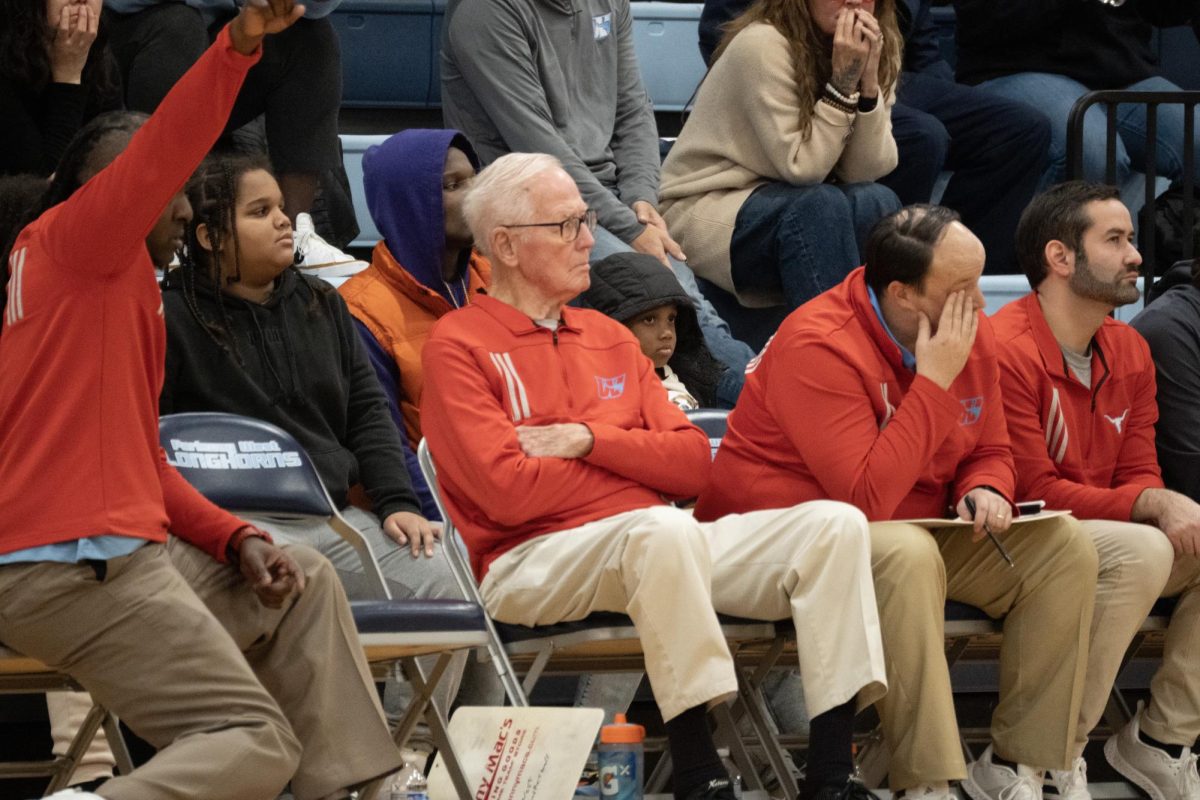A viral video shows two activists flinging tomato soup at Van Gogh’s “Sunflowers.” Then, with the $81 million painting dripping red, the activists superglued themselves to the wall and asked the crowd, “Is art worth more than life?”
The protestors had no intention of ruining the painting, which was protected behind a layer of glass, but have been charged with criminal damage to the frame. The two were members of Just Stop Oil, a United Kingdom-based advocacy group protesting the country’s approval of over 40 new fossil fuel projects by 2025. This event was part of a long string of climate-related attacks on art worldwide, from smearing mashed potatoes on a Monet to an attempted caking of the Mona Lisa. Although protestors hope their actions will spur governments toward addressing the looming climate catastrophe, they have instead polarized the public into a debate on whether attacking art is justifiable.
One consideration in this debate is whether protests targeting art institutions are effective. Frequent attacks on well-known, adored art pieces have certainly brought attention to the climate cause — but will this attention bring about change? In 2011, protestors held a 25-hour-long sit-in at Tate Modern to protest the London-based art museum’s partnership with British Petroleum due to the oil company’s contribution to global warming. Eventually, Tate Modern cut ties with BP, though they claimed this was due to business costs. Since then, following years of protest, other cultural institutions have also ended their partnerships with oil companies. But despite these small victories, these demonstrations alone are not enough because oil and gas industries’ profits have continued to skyrocket, and in 2021, nations worldwide provided $700 billion in subsidies for these companies.

Furthermore, even when activists only intended to threaten and not damage beloved artworks, these iconic pieces feel like innocent collateral in their crusade. Why must we choose between art and life when art is such an important part of all our lives? Historically, attacking art often causes more public backlash than support, which we already see in much of the press and online response to the “Sunflowers” attack. Research shows that while disruptive protests may gain attention, they reduce the popularity of important causes. Even beyond the climate movement, the public seems to focus on whether protests are “right” rather than on the urgent causes activists advocate for.
But this begs the question, what type of activism would be the most appropriate? While attacking art can be highly alienating, unlike past violent demonstrations, these protests have not harmed any people or, ultimately, any art. Furthermore, many other forms of activism have been criminalized and unsuccessful, with peaceful protesters worldwide facing heightened prosecution and ridicule.
And, ridiculously, the “Sunflowers” soup stunt has brought more attention to the climate cause than the death of Wynn Bruce, a climate protestor who set himself on fire in front of the Supreme Court in April. The fact that the public has focused more on the “Sunflowers” incident rather than a man’s death suggests that perhaps we pay more attention to the materialistic value of art rather than the value of human life.

Indeed, for decades, protestors have begged policymakers to recognize the lives impacted by climate change. Over a century of scientific evidence supports that human activities have caused rapid warming of the Earth. Rising global temperatures lead to intensified swings in weather, with colder winters and hotter summers, but also make natural disasters such as hurricanes, tsunamis and droughts occur more often and be more devastating. Hotter temperatures, droughts and severe storms will continue to kill and force millions to leave their homes. In Pakistan, over 30 million people have been displaced since August due to floods likely caused by climate change. Yet, despite all these efforts and all the people suffering globally, greenhouse gas emissions generated by human activity have only continued to increase.
It is this feeling of hopelessness and futility that fuels climate activists to take to museums and art galleries. Oftentimes, climate protestors are young and rightfully impassioned for the sake of all our futures. We have inherited a deteriorating Earth and are running out of time to save it. A UN climate report has stated that global greenhouse emissions must begin decreasing before 2025 and be curtailed by 43% by 2030 if we have a liveable planet. While we spend time debating the reasoning behind these attacks, the climate crisis is only worsening.
So yes, attacking art is likely not an effective form of protest. But instead of asking whether throwing tomato soup at a Van Gogh is appropriate, perhaps we should consider why young people are forced to go to such lengths to get anyone to pay attention to our dying planet.



![Junior Fiona Dye lifts weights in Strength and Conditioning. Now that the Trump administration has instituted policies such as AI deregulation, tariffs and university funding freezes, women may have to work twice as hard to get half as far. "[Trump] wants America to be more divided; he wants to inspire hatred in people,” feminist club member and junior Clara Lazarini said.](https://pwestpathfinder.com/wp-content/uploads/2025/05/Flag.png)
![As the Trump administration cracks down on immigration, it scapegoats many immigrants for the United States’ plights, precipitating a possible genocide. Sophomore Annabella Whiteley moved from the United Kingdom when she was eight. “It’s pretty scary because I’m on a visa. When my visa expires next year, I’m not sure what’s going to happen, especially with [immigration] policies up in the air, so it is a concern for my family,” Whiteley said.](https://pwestpathfinder.com/wp-content/uploads/2025/05/DSC_0077-7copy.jpg)
![Shifting global trade, President Donald Trump’s tariffs are raising concerns about economic stability for the U.S. and other countries alike. “[The tariffs are] going to pose a distinct challenge to the U.S. economy and a challenge to the global economy on the whole because it's going to greatly upset who trades with who and where resources and products are going to come from,” social studies teacher Melvin Trotier said.](https://pwestpathfinder.com/wp-content/uploads/2025/05/MDB_3456-1200x800.jpg)



![Some of the most deadly instances of gun violence have occurred in schools, communities and other ‘safe spaces’ for students. These uncontrolled settings give way to the need for gun regulation, including background and mental health checks. “Gun control comes about with more laws, but there are a lot of guns out there that people could obtain illegally. What is a solution that would get the illegal guns off the street? We have yet to find [one],” social studies teacher Nancy Sachtlaben said.](https://pwestpathfinder.com/wp-content/uploads/2025/01/DSC_5122-1200x800.jpg)


![Making up a large portion of the film industry, many popular movie remakes and sequels have been released recently. Similar to film remakes, theater teacher Amie Gosset often uses play adaptations of famous movies for theater productions. “It’s challenging because people have an idea of what the film is, whether it’s an iconic film or one they really liked. [Consumers] come in with a preconceived notion of how the [film] should be. Then, [they] are either surprised because they like the new version or disappointed because it’s not what they’re used to.”](https://pwestpathfinder.com/wp-content/uploads/2024/12/DSC_0042-1200x801.jpg)


![Pitching the ball on Apr. 14, senior Henry Wild and his team play against Belleville East. Wild was named scholar athlete of the year by St. Louis Post-Dispatch after maintaining a high cumulative GPA and staying involved with athletics for all of high school. “It’s an amazing honor. I feel very blessed to have the opportunity to represent my school [and] what [it] stands for,” Wild said.](https://pwestpathfinder.com/wp-content/uploads/2025/05/unnamed-6-1200x714.jpg)
![Red, white and blue, the American flag holds the values of our democracy. The fight that we once endured has returned, as student journalists and senior correspondents across the country are losing their voices due to government control. “[Are] the White House and [the] government limiting free speech [and] freedom of the press? Yes [they are],” chief communications officer of the Parkway School District and former journalist Elisa Tomich said.](https://pwestpathfinder.com/wp-content/uploads/2025/03/Untitled-design-14.jpg)
![Freezing in their position, the Addams Family cast hits the “rigor mortis” pose after cast member and senior Jack Mullen, in character as Gomez Addams, calls out the stiff death move. For the past four months, the combined company of cast members, orchestra pit, crew and directors all worked to create the familial chemistry of the show. “I’m excited for [the audience] to see the numbers, the music, the scenes, but I also just love all the technical aspects of it. The whole spectacle, the costumes, makeup and the people that put in the work backstage in order to make the show successful on stage. I’m excited for people to see and appreciate that,” Mullen said.](https://pwestpathfinder.com/wp-content/uploads/2025/03/DSC0116-1200x800.jpg)
![A board in the Parkway West counseling department displays pennants of selective universities. With a wide range of students interested in attending, it’s important that these schools have clear priorities when deciding who to admit. “[Washington University] had the major that I wanted, psychology, philosophy, neuroscience. That's a holistic study of the brain, and [WashU is] the only college in the world that offers that. That's the main reason I wanted to go; I got into that program,” senior Dima Layth said.](https://pwestpathfinder.com/wp-content/uploads/2025/02/Flag-1.png)

![Within the U.S., the busiest shopping period of the year is Cyber Week, the time from Thanksgiving through Black Friday and Cyber Monday. This year, shoppers spent $13.3 billion on Cyber Monday, which is a 7.3% year-over-year increase from 2023. “When I was younger, I would always be out with my mom getting Christmas gifts or just shopping in general. Now, as she has gotten older, I've noticed [that almost] every day, I'll open the front door and there's three packages that my mom has ordered. Part of that is she just doesn't always have the time to go to a store for 30 minutes to an hour, but the other part is when she gets bored, she has easy access to [shopping],” junior Grace Garetson said.](https://pwestpathfinder.com/wp-content/uploads/2024/12/DSC_0249.JPG-1200x801.jpg)
![Complex global supply chains supply the goods for everyday luxuries, such as the coffee at West High’s Blue Brew. Low tariffs enabled much of the prosperity of modern history. “Higher tariffs lead to higher costs. A tariff is a tax on an imported good, and someone has to pay for that tax, and typically that [will] end up impacting consumers,” economics teacher Rachel Money said.](https://pwestpathfinder.com/wp-content/uploads/2024/12/Flag-1.png)



John Smith • Feb 21, 2025 at 1:42 pm
The planet isn’t dying. According to climate. gov the average temperature has risen less than 2 degrees Fahrenheit since 1850. It is a cycle. It will cool back down. Don’t destroy art.
Will Gonsior • Dec 6, 2022 at 1:48 pm
I think ruling out the possibility that a human can create something that would be worth dying for could be damaging. However, I definitely see your point. Disparaging people who aren’t generally harming paintings and are bringing awareness to climate issues is counterproductive.
I enjoyed this article; it was well-written and informative
Lauren Holcomb • Nov 2, 2022 at 12:54 pm
This goes hard, I love you.
Emily Early • Nov 2, 2022 at 11:49 am
Great story Serena!